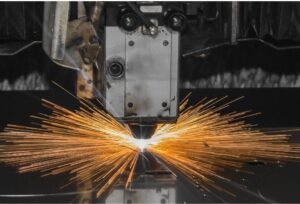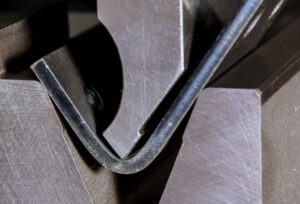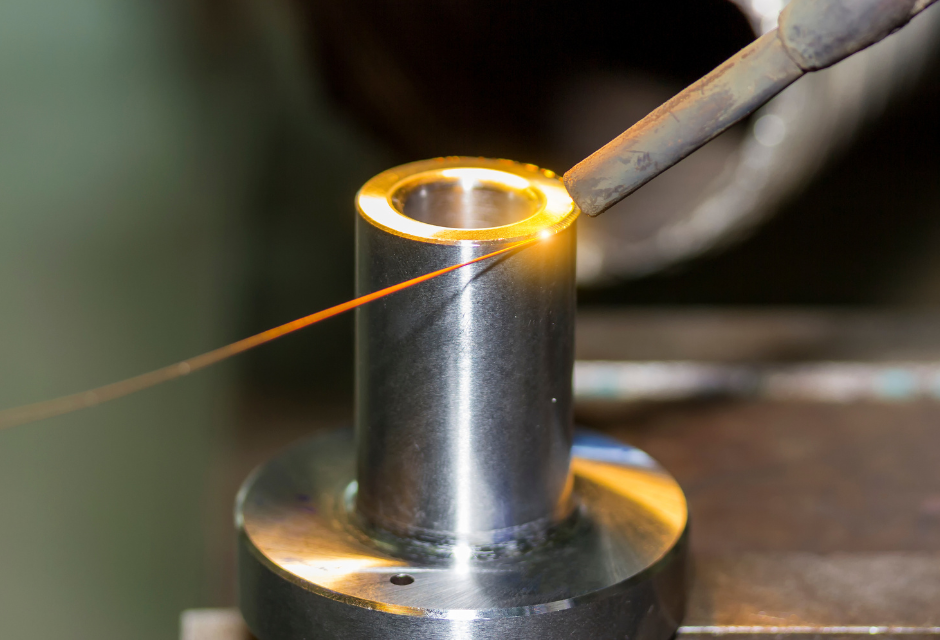
There are many different types of welding that play an important role in metalworking.
Among them, laser welding has unique characteristics among the many welding methods, so it is necessary to acquire a thorough basic knowledge of laser welding before introducing it.
This article will therefore provide a detailed description of the characteristics and typical types of laser welding.
For more information about Taiga, click here.Table of Contents
What is laser welding?
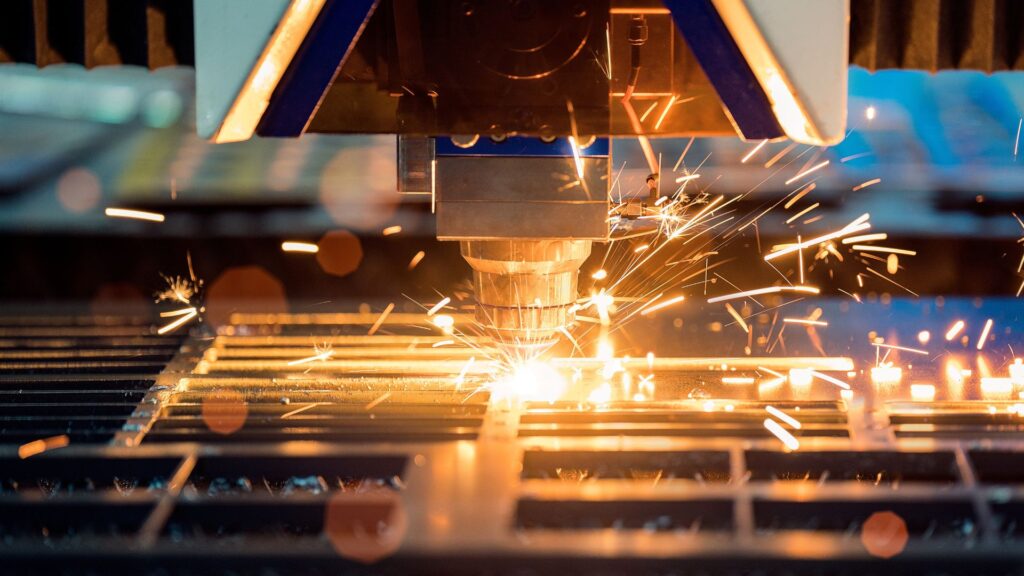
Laser welding is a method of joining metals using the energy of light emitted by a laser.
For welding methods,
- fusion welding
- pressure welding
- brazing
There are three types of welding described above, and laser welding is included in the "fusion welding" category.
Various processing such as butt welding, overlap welding, T-joints, flare welding, circumferential welding, etc. are available.
Also, compared to other types of welding, it is easier to automate and line up, so the work can be done quickly while maintaining accuracy.
It is also capable of welding dissimilar materials and has extremely high controllability of processing results, making it useful in a wide range of fields and industries, including the automotive, aerospace, and electronics industries.
Advantages of Laser Welding
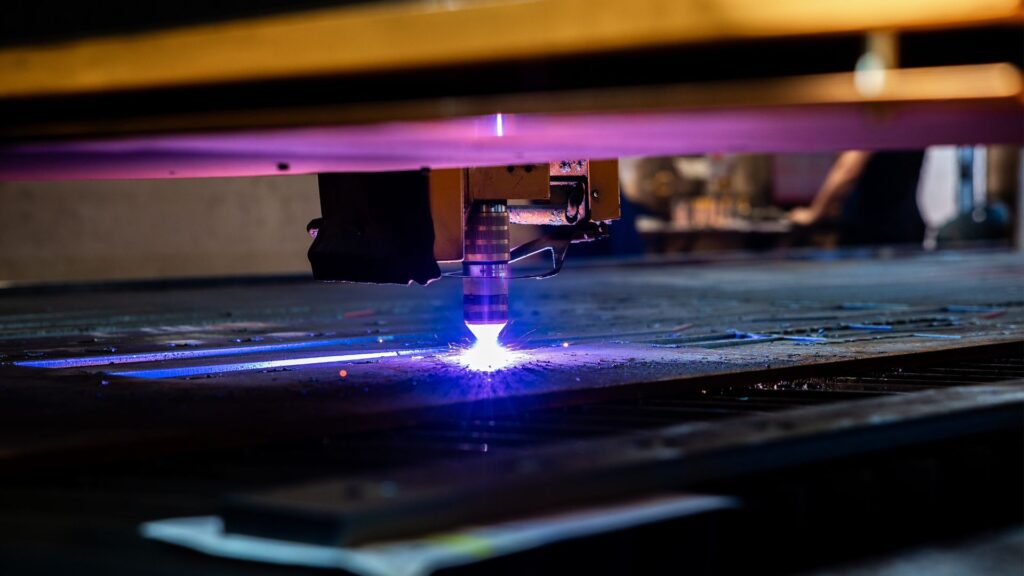
Let's now take a closer look at the advantages of laser welding.
Low thermal distortion
Low thermal distortion is a major advantage in laser welding.
With TIG welding, more heat is transferred to the metal, which can cause significant heat distortion to the product.
With laser welding, however, it is easier to minimize the risk of thermal distortion because the energy can be focused on a small focal point using a laser.
Sufficient strength can be ensured.
Laser welding is a method that ensures sufficient strength.
Although there are concerns about insufficient strength due to the slow welding speed, there is no need to be concerned about the strength of the welding since the welding is deeply welded.
Reduced finishing man-hours.
In welding, it may become necessary to perform strain relief.
However, laser welding requires fewer man-hours for finishing because there is less thermal distortion to begin with.
Also, if the processing conditions are right, weld burning can be reduced, and the electropolishing process can likely be reduced as well.
This makes it an easy way to improve productivity and efficiency.
Disadvantages of laser welding
Let's now take a closer look at the disadvantages of laser welding.
Vulnerable to gaps
Concentrating energy on a small focus of Φ0.1 to 0.6 mm is a characteristic of laser welding.
Therefore, if there is a gap, it may not be welded properly.
To ensure smooth processing operations, it is necessary to improve the accuracy of the bending process and thoroughly maintain the jigs.
Not good at overlay welding
Laser welding specializes in base metal welding.
On the other hand, they are not very good at overlay welding, sometimes running out of power and not reaching the base metal or not being strong enough.
If the overlay welding cannot be removed by any means, it may be better to consider a method other than laser welding.
Adequate safety measures are necessary
Laser welding is a highly versatile welding method with excellent speed and accuracy.
However, since this method uses a high-energy laser, safety must be taken into consideration.
Laser products have established plans for safety, and the machines used in laser welding are classified as "Class 4," which is considered the most hazardous.
Manufacturers take all kinds of safety measures, but they are meaningless if the user's safety management is lax.
To ensure safe and smooth operations, be sure to understand the hazards and risks involved and use the equipment in the correct manner.
Typical types of laser welding
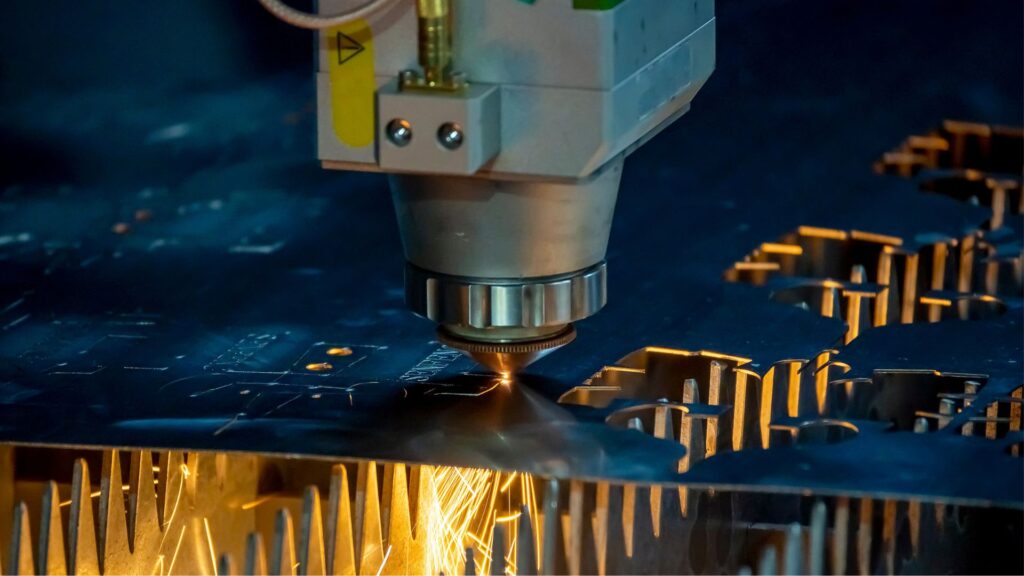
Next, we will discuss the typical types of laser welding in detail.
YAG Laser Welding
YAG laser welding is a device that utilizes an artificial crystal called yttrium aluminum garnet as a medium.
This is a typical method in "solid-state laser welding" where the medium is solid and is used in many situations.
Compared to the CO2 laser, which will be introduced later, the CO2 laser has a higher energy absorption rate, so metals can be joined together with less energy.
Note, however, that there is a disadvantage in that flash lamps are required for excitation of YAG crystals and generate a lot of heat, so the construction of cooling equipment tends to be on a large scale and the cost burden is accordingly high.
Fiber Laser Welding
Fiber laser welding is a device that allows a laser to be created inside a fiber.
To create this mechanism, rare earth elements are doped into the core layer of the optical fiber.
Like the YAG laser introduced earlier, the output wavelength is easily absorbed by metals, and since it is possible to further increase the output power, it is easy to improve processing speed and efficiency.
Another advantage of fiber laser welding is that it can weld dissimilar metals and smoothly perform difficult welding.
In addition, they do not require maintenance such as mirror adjustment or lamp replacement, which lowers running costs, making them the most widely used type of mirror at present.
On the other hand, the processing speed must be adjusted because of the tendency to generate "spatter," which is the scattering of the target metal.
Disk Laser Welding
Disk laser welding is a device in which a solid-state laser is specially constructed to enhance the precision of the welding process.
Conventional solid-state lasers tend to heat up when driven, resulting in non-uniform temperatures.
When this happens, a thermal lensing effect occurs, which changes the laser's condensing power and inevitably reduces the accuracy of the weld.
Disk laser welding focuses on this area.
This welding method reduces thermal effects by machining the laser crystal onto a thin disk and attaching a heat sink to the back surface.
This not only improved welding accuracy, but also eliminated the need for extensive cooling.
CO2 Laser Welding
CO2 laser welding has the longest history among the many laser welding methods.
This refers to a device that uses carbon dioxide as a medium to create lasers, and is characterized by its ability to output long wavelengths.
In addition, welding can be performed in a small area, which facilitates maximizing work efficiency.
Another advantage of this technique is that it has a higher luminous efficiency and stronger output than solid-state lasers.
However, it has the disadvantage that its wavelength is too long, so a special mirror or lens must be used to create an optical path.
Where to order laser welding?
Laser welding is unique among the many welding methods and requires a high level of skill and knowledge for installation.
If you do not have your own equipment or expertise, we recommend hiring a contractor with a proven track record.
In such a case, we would basically search for potential clients on our own, and at the same time request quotations and compare them, but this approach inevitably takes time.
Taiga, a service we operate, is useful in such cases.
Taiga is a matching platform in the manufacturing and production industry and serves to connect partners and users.
In addition to simply connecting users and partners, the service also provides a variety of functions that allow users to communicate and edit drawings within the service.
In addition, the ability to purchase products with the same specifications with a single click not only helps you find a reliable partner, but also increases your production efficiency.
Account creation is completely free, so if you are at all interested, please take advantage of this service.
Summary
Laser welding is a method of joining metals together using the energy of light emitted by a laser.
It has been introduced in a variety of industries and fields because it has greater advantages than many other welding methods and has a long history.
However, laser welding requires advanced knowledge and skills and can be dangerous if done incorrectly, so if you are not comfortable with your own processing and installation, outsourcing is recommended.
By using Taiga, a matching platform for the manufacturing and production industry, you can easily find reliable subcontractors that match your company's needs.
In addition, all processes, including meetings and drawing editing, can be completed within the service, so if you are interested, please give it a try.
For more information about Taiga, click here.
 0120-987-742
0120-987-742
